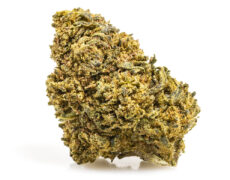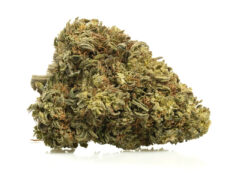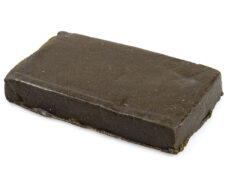Modified on: 05/02/2024
Discovered the origins of hemp, which was cultivated as early as twelve thousand years ago for medicinal purposes
A new study suggests that the first cultivation of hemp would have originated in eastern Asia more than twelve thousand years ago.
But before we find out where cannabis originated, let’s take a look at the history of this exceptional plant.
Hemp (Cannabis sativa, L. 1785) has been known to man for its versatility and therapeutic effects since the dawn of time.
There is evidence of man’s use of cannabis as early as the Neolithic period (the Stone Age, from 10,000 BC to 3,500 BC) by discovering fossilized seeds.
It is exciting and indicative to discover that the oldest human artefact is a piece of hemp cloth dating back to 8,000 B.C., the first evidence of cannabis (nowadays only CBD cannabis is legal) cultivation in China for textiles before the advent of silk and cotton.
In Arab countries, the resin of the hemp plant was consumed for centuries for its mind-altering properties, particularly by the Hashashin in Syria.
The term Hashin from Arabic would mean ‘hashish addict’ or ‘hashish smoker’. Cannabis was also used by the Assyrians, who learned of its psychoactive properties from the Aryans, and thanks to them, it was also made known and used by the Scythians and Thracians. They began using it during their religious rituals.


Description of Cannabis
Cannabis, a plant with a rich and diverse history, encompasses various facets that have contributed to its widespread recognition and utilization across different cultures and eras.
The life cycle of cannabis involves both female plants and male plants, each playing a unique role in the plant’s development. The reproductive process involves the pollination of female flowers by male plants, leading to the formation of cannabis seeds. These seeds are not only vital for the continuation of the species but also serve as a valuable resource with numerous applications.
One of the notable aspects of cannabis is its medicinal potential, giving rise to the concept of medicinal cannabis. Its therapeutic properties have been harnessed throughout history, offering relief to various ailments. However, the dual nature of cannabis, as both a medicinal aid and a source of narcotic drugs, has led to a complex relationship between the plant and societal norms.
The vast array of cannabis strains highlights the plant’s adaptability and the diverse effects it can produce. This diversity is explored in reports like the World Drug Report, which delves into the cultivation, usage, and impact of cannabis on a global scale.
The history of cannabis is deeply rooted in human civilization, with evidence of its use dating back to ancient times. Ancient cannabis played a role in cultural rituals, religious practices, and early forms of medicine. The intricate structure of the cannabis plant, including its cannabis inflorescence, has been a subject of exploration and study.
As research progressed, the true potential of cannabis was revealed, particularly in its medicinal use. The plant contains a psychoactive compound known as cannabinoids, which interacts with the body’s cannabinoid receptors, influencing various physiological processes. This discovery paved the way for further exploration of cannabis in both Eastern and Western medicine.
In the Middle East, cannabis has a long-standing presence, contributing to cultural practices and traditional remedies. Its role in ancient Chinese medicine reflects its importance in addressing health concerns and maintaining balance within the human body.
The cultivation of cannabis extends beyond its medicinal and cultural roles. The plant is grown for various purposes, including the production of fiber, leading to the concept of cultivated cannabis. The distinction between hemp and psychoactive cannabis highlights the existence of separate species with different applications.
However, the misuse and drug abuse associated with cannabis have raised concerns, prompting discussions on the regulation of its use. The prevalence of cannabis as a recreational drug and its association with conditions like AIDS in patients have fueled debates on its legal and ethical implications.
In contemporary times, cannabis is often associated with terms like marijuana. The shift towards exploring its potential as animal feed further diversifies its applications, showcasing the versatility of this remarkable plant.
In summary, the description of cannabis encompasses a spectrum of aspects, from its biological characteristics to its cultural significance and medicinal potential. As ongoing research continues to unravel the complexities of cannabis, its role in shaping societies and influencing various fields remains a fascinating subject for exploration.
Where did cannabis come from?
The origin of the cannabis plant, specifically cannabis sativa, traces back to the region of Central Asia. This plant, renowned for its various applications, has a long and intricate history entwined with human civilizations.
The cultivation of cannabis plants dates back to ancient times, where its use spanned a spectrum of purposes. Initially, people discovered the psychoactive properties of cannabis through the utilization of the female cannabis plants. Early on, it was recognized that female plants possessed psychoactive substances, leading to the initiation of cannabis cultivation for both medicinal and recreational purposes.
In terms of the ancient use of cannabis, there is evidence suggesting that various cultures, including the Celts, were familiar with cannabis and its potential benefits. However, the extent of their cannabis use and its cultural significance remains a subject of ongoing cannabis research.
Hemp, derived from the cannabis plant, has been cultivated for centuries, primarily for its industrial applications. The hemp plant, often referred to as industrial hemp, is distinct from drug cannabis due to its negligible THC content. Its cultivation is focused on the production of hemp fiber, seeds, and other non-psychoactive components.
The historical journey of cannabis spans across continents, with its use becoming integral to societies in the Middle East, Western China, East Asia, and Eastern Europe. It played a role in ancient cultures, finding applications in Chinese medicine, European hemp cultivation, and even being acknowledged for its therapeutic properties.
As cannabis history unfolded, the plant’s various strains and species were recognized, with cannabis indica and cannabis sativa emerging as the two primary varieties. The average THC content, which contributes to the psychoactive effects of cannabis, can vary among these varieties.
In modern times, the widespread use of cannabis for both medicinal and recreational purposes has led to a surge in cannabis cultivation, with distinct strains developed to cater to different needs. The cultivation of cannabis plants has become a global phenomenon, drawing attention from the pharmaceutical industry, the United Nations Office on Drugs and Crime, and cannabis enthusiasts alike.
Today, we witness the continued evolution of cannabis varieties, with significant compounds like cannabinoids being explored for their therapeutic properties. Cannabis, once used in its raw form or as hash oil, is now being transformed into various products, including pills, for easier consumption.
The story of cannabis is one that spans centuries, continents, and cultures. From its origins in Central Asia to its widespread cultivation and use in various societies, cannabis has played a diverse role throughout human history. The ongoing cannabis research continues to unravel its potential applications, establishing its significance in both ancient traditions and modern medical practices.
Cannabis plants arrives in the West
Cannabis, in the form of cannabis sativa, made its way to the Western world through a historical journey that can be traced back to around 500 AD. The plant likely reached the West through the movements of nomadic tribes, marking the beginning of its significance in various cultures.
By the early 1600s, hemp had become an indispensable crop for North American peoples, particularly settlers who recognized its versatility. They cultivated cannabis plants for applications ranging from clothing to canvas for ships’ sails and ropes. The extraction of oil from hemp seeds, a practice that continues today with the legal version known as CBD oil, added another dimension to the plant’s utility.
The use of hemp fibers for making sails and ropes reached its pinnacle in Europe during the expansion of the Maritime Republics. This led to the establishment of a thriving business around the plant, making Italy a major player in the global hemp market. Italy swiftly became the world’s second-largest producer of hemp, boasting nearly 1000 hectares of cultivated land and serving as the primary supplier to the British Navy.
Key regions for hemp cultivation in Italy included Ferrara and Bologna, with additional cultivation taking place in Liguria, Tuscany, Umbria, Salerno, Naples, and Sicily.
The historical significance of hemp in the Western world reflects not only its role as an industrial commodity but also its contribution to naval and domestic needs. The utilization of hemp in various forms, from textiles to oil extraction, showcased the plant’s versatility and adaptability.
As cannabis use expanded, the cultivation of hemp became deeply ingrained in the European landscape, marking an era when Italy played a central role in the global hemp trade. The plant’s journey from being an ancient crop to a cornerstone of trade and industry sheds light on the diverse uses and applications that have evolved over centuries.
This historical narrative underscores the resilience and adaptability of the cannabis plant, demonstrating its ability to transcend cultural and geographical boundaries. The legacy of hemp cultivation, particularly in Italy, remains a testament to the plant’s enduring presence and economic importance in the Western world.
Read also: How to recognise high-quality marijuana?


Origin of cannabis: the first finds in Central Asia
A 2016 study had linked the first findings of cannabis cultivation to Japan and China.
Many botanists now argue that the plant was ‘domesticated’ from the easternmost regions of Central Asia, where wild varieties are still widespread today.
Evidence has pointed to three key regions: Central Asia — present-day Kazakhstan, Mongolia, and the Russian Far East could all be potential points of origin for the plant; India — Cannabis was discovered growing wild in the mountains of the south-western Himalayas, and it was considered reasonable to assume that the plant originated in north-western India, including the Punjab and Kashmir regions.
Finally, recent studies have focused on Tibet.
Tibet: the true cradle of cannabis
It has recently been demonstrated that cannabis come from on the Tibetan plateau.
Although all the above theories have a valid basis, it has recently been proven that cannabis cames from on the Tibetan plateau.
However, the research team did not have an easy time with it. Historical documents’ lack of fossil prints (i.e., impressions of the leaves being studied on other objects) made the study more complicated than expected.
To overcome this lack, scientists turned to the fossil pollen of the Cannabaceae.
But the truth is hard to find. The researchers were confronted with the extreme similarity between Cannabis pollen and another plant in the Cannabaceae family, Humulus lupulus (L., 1753), the common hop.
To circumvent the obstacle caused by identification problems, the researchers used a statistical technique based on ‘ecological approximations’ to differentiate between the different plant pollens.
The data confirm the north-eastern Tibetan plateau as the center of origin of cannabis, in the vicinity of Lake Qinghai at about 3700 meters above sea level.
Read also: How to know if my weed is of good quality? Here’s everything you need to know
Cannabis Origin: Cannabis in the Middle Ages
The journey of cannabis sativa through the annals of history takes us to the Middle Ages, a period where the versatile plant continued to make its mark across different cultures and civilizations.
During this era, the cultivation of cannabis sativa was not only widespread but also integral to various aspects of daily life. Both female and male plants were carefully tended to, recognizing the unique properties each possessed. The utilization of the female plants for medicinal purposes was already well-established, laying the groundwork for the future development of medical cannabis.
Medical practitioners in the Middle Ages began to explore the potential of the cannabis sativa plant for its medicinal benefits. The leaves of the plant, along with its seeds, became key components in early formulations of medicinal cannabis. The cannabis leaves were recognized for their therapeutic properties, setting the stage for the eventual extraction of medicinal compounds.
As knowledge of the psychoactive effects of cannabis smoke became more apparent, the use of the plant extended beyond medicinal applications. The diverse range of cannabis strains available during this time allowed for different uses, including recreational and spiritual practices.
In the Middle East, where cannabis come from, the plant became deeply rooted in cultural and medicinal traditions. Ancient cannabis use in the Middle East was not limited to the medicinal realm; it played a role in religious ceremonies and cultural rituals, further intertwining cannabis with the social fabric of the region.
The history of cannabis in the Middle Ages reveals its role in various forms, from the cultivation of wild cannabis to the deliberate cultivation of specific strains for medicinal and recreational purposes. The concept of cannabis as a narcotic drug began to take shape during this period, influencing perceptions that persisted through subsequent centuries.
The versatility of cannabis sativa was also evident in its use in various forms, including the creation of hash oil. This concentrated form of cannabis, extracted from the resin of the plant, became valued for its potent psychoactive compounds.
In terms of medicinal use, the medical cannabis played a significant role in providing relief to various ailments. The plant’s psychoactive compound, now known as cannabinoids, became a focus of early cannabinoid research, laying the groundwork for future exploration of the plant’s potential in medicine.
In conclusion, the presence of cannabis sativa in the Middle Ages marked a crucial chapter in its history. From being cultivated for medicinal purposes to its role in recreational and spiritual practices, the plant’s influence was widely distributed. The seeds of cannabis sown in this era continued to grow, shaping the plant’s trajectory into the diverse and impactful force it is today.
Differences Between Cannabis Indica and Cannabis Sativa
The two primary variations within the cannabis plant, known as cannabis sativa and cannabis indica, exhibit distinctive characteristics, influencing their usage, effects, and cultivation practices. Understanding these differences is crucial for both enthusiasts and those exploring the potential applications of the plant and every cannabis use.
Cannabis Sativa:
Cannabis sativa is often associated with an energizing and uplifting effect. This species of the cannabis plant is known for its tall and narrow stature. Cultivated for various purposes, including fiber production, the plant’s industrial hemp variety has minimal THC content, distinguishing it from its psychoactive counterparts. In the realm of medical cannabis, cannabis sativa strains are frequently used for their potential to enhance focus and creativity.
The leaves of cannabis sativa plants are typically long and slender, and the strains belonging to this category are renowned for their higher THC to CBD ratios. This characteristic makes them a preferred choice for those seeking the psychoactive effects commonly associated with smoking marijuana or using cannabis extracts.
Cannabis Indica:
Conversely, marijuana indica is characterized by a more relaxing and sedative impact. This species tends to have a shorter and bushier appearance, making it suitable for indoor cultivation. Traditionally linked to the narcotic effects associated with smoking marijuana, marijuana indica strains are often favored for their potential in alleviating pain and promoting relaxation.
The leaves of cannabis indica plants are broader and often display a darker shade of green compared to their sativa counterparts. Medicinal cannabis users may find marijuana indica strains beneficial for managing conditions that require a more calming effect.
Cultivation and Appearance:
While both varieties fall under the genus cannabis, they have distinct growth patterns. Cannabis sativa plants are known for their height, thriving in warm climates and often reaching over ten feet. On the other hand, cannabis indica plants are shorter and stockier, making them suitable for indoor cultivation in a controlled environment.
Medical Use:
The medical use of each variety is influenced by their specific properties. Cannabis sativa may be recommended for conditions such as depression or fatigue, while marijuana indica is often considered for pain management and relaxation.
The differences between cannabis indica and cannabis sativa extend beyond their physical appearance to encompass their psychoactive effects, medicinal properties, and preferred cultivation environments. As research and understanding of the cannabis species continue to evolve, these distinctions provide valuable insights for those seeking to explore the diverse world of cannabis varieties.
Conclusion
The research team believes that the plant spread westwards, reaching Russia and Europe 6 million years ago, and eastwards, reaching eastern China 1.2 million years ago.
Finally, studies on fossil pollen have also revealed where hemp grows best: the steppe is the habitat where the plant thrives, as wide-open spaces characterize it without trees favour better growth.
Meanwhile, you can visit our JustBob online shop to find our best products, such as CBD hash and CBD flowers.









